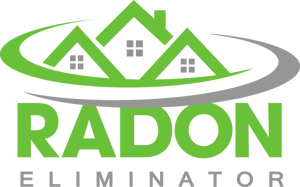Radon gas may be a danger to you and your family, but what is it?
Many people have heard about radon, but don't know much about it.
And there are still people who haven't even heard of radon.
Luckily, there is more and more information coming out about the dangers of radon and how to prevent them.
And there are companies like Radon Eliminator that can take you from the testing phase all the way to the mitigation phase to make sure your home is safe for all of its occupants.
In the article below, we will talk about radon and how dangerous it actually is.
Now that we understand how dangerous radon is it begs the question, how is one exposed to Radon? Read our blog post: “How Do You Get Radon Poisoning?” for more information.
Table of Contents
- What Is Radon?
- Exposure To Radon
- Radon is Deadlier Than...
- Radon Is Dangerous Everywhere
- Protect Your Family From the Dangers of Radon
What Is Radon?
Radon gas is a naturally occurring radioactive gas that is odorless, tasteless, and invisible.
Radon gas can fill your home, school, or place of work without you even knowing about it.
Radon gas comes from the decay of common elements such as uranium, which is found in the soil and rock beneath our feet.
It has also be found in water, though usually in less concentrated amounts.
When we encounter radon gas inside, it is usually harmless.
Radon gas becomes an issue when it builds up inside of buildings.
Radon gas seeps up from the surface and into surrounding areas, like homes and schools.
It can collect inside of your home after getting in through cracks in the foundation, walls, or flooring.

Exposure To Radon
Long-term exposure to the gas is dangerous and can eventually lead to lung cancer.
Because of the lack of understanding about radon, many people don't even know they've been exposed to radon until they've been diagnosed with lung cancer.
Estimates show that there are more than 21,000 radon-induced lung cancer deaths in the US alone each year, making it the second-leading cause of lung cancer.
It's the leading cause of lung cancer in non-smokers.
Some scientific studies have shown that children are much more sensitive to radon exposure because they see higher respiratory rates and instances of dividing cells naturally as they grow.
Radon particles can enter the lungs, where they cling to the inner linings and walls.
Once they're stuck in our lungs, they continue to undergo radioactive decay causing damage to nearby cells.
The most unfortunate thing about the 21,000 deaths each year is that they are preventable.
Knowing radon is a threat, and having your home tested for its presence can keep you healthy.
If elevated levels are discovered in your home, mitigation can ventilate the gas, making the air in your home safe again.
Lack of awareness is what makes radon most dangerous.
Most people don't know anything about radon, and some that do refuse to believe it can cause serious health issues.
Radon Is Deadlier Than…
Comparing the annual death rate of radon-induced lung cancer of 21,000 per year to that of other common accidents, we can see how deadly radon poisoning actually is.
- Drunk driving kills 17,400 per year
- Falls in the home kill 8,000 per year
- Drowning is responsible for 3,900 deaths per year
- Home Fires kill 2,800 per year
- Homicides kill 15,500 per year
That statistic alone should be enough to get you concerned about the problem.
Radon Is Dangerous Everywhere
Even if you have your home tested and mitigated, you can still encounter radon in other places.
Radon can collect inside any building, including where you work, where you go to school, in hospitals, public centers, and more.
So even though the air in your home may be perfectly safe, your children may be exposed to the deadly gas at school, and you can be exposed when you go to work.
It's a common misconception that radon is only a problem in certain places in the country, or only in houses that have basements.
However, that's not true at all.
Radon can be a problem anywhere since it's a naturally occurring gas.
Even if your neighbor's home tests safe, you may still have dangerously elevated levels of radon in your home.
Some geographical regions are indeed more prone to elevated levels of radon.
But that doesn't mean it can't exist elsewhere.
Instances of elevated radon gas have been reported in every state in the United States.

Protect Your Family From The Dangers of Radon
Unless you have your home tested, there is no way to know if the radon level in your house is more than the acceptable level.
That means your own home could actually be harmful to your health.
To make sure your home is safe for you and your family, you need to get your home tested for radon gas.
To do just that, contact Radon Eliminator today.
They can schedule a test for your home, and if necessary, they can install a radon mitigation system to lower your home's levels of radon.
Click the button below to get started today.





